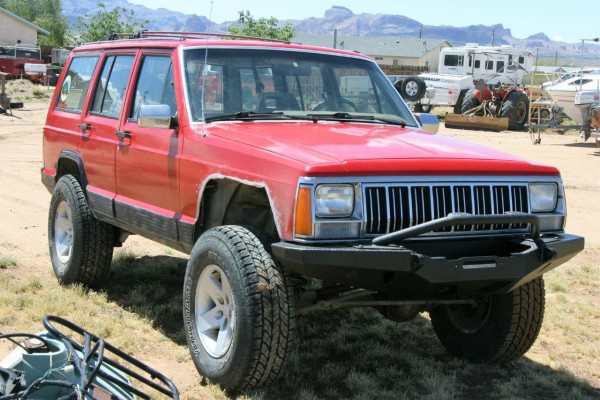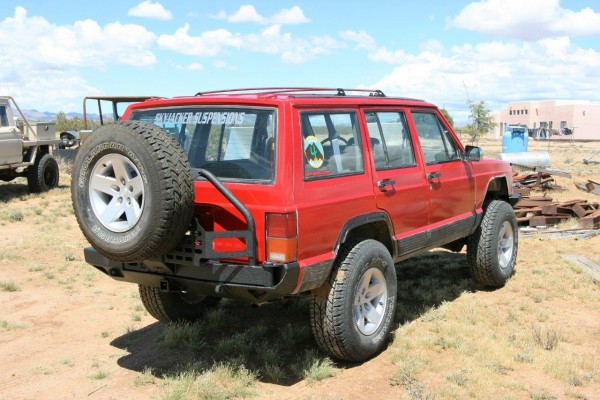When building a daily driver for an avid off-roader, who also happens to be a high school student in Southern California, there are a some unique challenges you need to consider. First, you’ll need to think about any recovery needs while on the trail. You’ll also want to account for the bumper car course that is a typical high school student parking lot.
For our build, we felt a pair of Smittybilt XRC steel bumpers were a necessity to take on both challenges.
We’re currently in the process of building a 1990 Cherokee Laredo that will be my grandson’s daily driver to school and work and will also serve as an off-road weekend warrior for camping trips. We’ve already lifted the Cherokee and gave it a set of Rubicon wheels and Yokohama Geolandar A/T tires and replaced its injectors
Now we need to protect it with steel.
XJ-model Cherokees are one of the best “bang for your buck” Jeeps available today, but new parts for them are being dropped from some catalogs because of their age. Smittybilt, among a few others, is maintaining a good selection of aftermarket parts for them, and you can still find them through companies like Summit Racing.
We had a few minimal requirements for our bumpers. They needed to have the ability and rating to tow, and we also wanted heavy-duty recovery attachment points, a spare tire carrier, winch and auxiliary lighting mounts, and enough strength to survive daily trips to a high school parking lot. Smittybilt XRC bumpers (#76810 and #76851, front and rear, respectively) fit our requirements to a T!
XRC bumpers are manufactured from 3/16-inch cold-rolled steel that is robotically welded to exact specifications. With raised corners for better entry and exit under the most extreme conditions, they’re engineered to provide maximum ground clearance. They have solid-mounted D-rings, are welded on the inside and out, and then finished with a two-stage textured matte black powder coat. The rear bumper is equipped with a class III hitch for towing; the front bumper is equipped with a built-in winch plate to accommodate up to a 12,000-pound rated winch. There’s even an option for an XRC front bull bar, which is manufactured from 1.75-inch tubing and has two light tabs.
Mounting heavy-duty bumpers—like our XRC bumpers—can be a problem on unibody vehicles if they have a poorly designed mounting system. Fortunately, Smittybilt XRC bumpers are designed for mounting on our unibody XJ, so we didn’t anticipate any problems.
Follow along to see how our installation went down.






























Wonderful blog! I found it while browsing on Yahoo News.
Do you have any suggestions on how to get listed in Yahoo News?
I’ve been trying for a while but I never seem to get there!
Cheers
It’s bad that I need to write an essay about this brand book. I started reading and I didn’t understand anything at all, how can I read this? No, stop it and make a win in favor of https://paperial.com/buy-narrative-essay this is the right decision, this is the right solution to the problem and all I need is to buy a narrative essay and I’m 100% sure where I need to do this.
I’m a college student but I don’t have time to write written papers. Especially for writing a speech before a crucial day. And here comes to the rescue https://write-essay-for-me.com/write-my-college-term-paper/ – Thanks to this site I devote all my free time to myself. Try you too